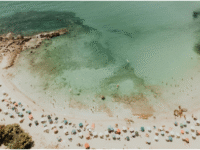Why The Manaslu Circuit Is The Ultimate Offbeat Himalayan Adventure

The Manaslu Circuit is a hidden treasure that provides an off-the-beaten-path trekking experience that is often compared (justifiably so) to trekking in the Annapurna and Everest regions, but with a lesser number of trekkers surrounding you. This off-the-beaten-path takes you around the eighth highest peak in the world, Mt. Manaslu at 8163m high, offering a unique mix of pristine natural beauty, cultural discovery, and a genuine wild experience. What sets the Manaslu Circuit apart is its remoteness. Trekking in this region truly takes a step back in time, as you walk through unexplored villages, traditional culture with strong Tibetan influence touches every aspect of their daily life.
Manaslu Circuit Trek The trail supplies jaw-dropping landscapes, covering everything from lush subtropical forests and terraced fields to barren alpine zones and glacial valleys. The lush countryside gives way to alpine terrain, with snow-capped peaks above and the raging Budi Gandaki River below. The high point of the trek is the Larkya La Pass at 5,106 meters, an exhilarating feat that offers trekkers breathtaking views of Himlung Himal, Cheo Himal, and the Annapurna Himalayan Range. Less populated than the more commercial trekking circuits, the Manaslu Circuit has a wild, unspoilt feel, and is the ideal destination for those who crave a sense of isolation and the raw beauty of the Himalayas.
However, the cultural experience beyond the attractive nature seems to be equally interesting. You’ll meet Gurung and Tibetan villages located in the most secluded areas of the mountains, where ancient monasteries, prayer wheels, and mani walls evidence a deep spiritual bond between the people and the mountains. Hiking from teahouse to teahouse, operated by local families, adds a further dimension of authenticity to the trip. The area is managed, and special permits are required, accompanied by a guide of the region to protect the environment and local traditions, keeping the charm of the mountain unblemished.
In every sense of the word, the Manaslu Circuit has been billed as the last best offbeat Himalayan adventure. It’s an even-handed mix of physical challenge and cultural depth, and untouched wilderness, that repays those who are happy to go the extra mile and seek out a more authentic Himalayan experience.
An Introduction to the Manaslu Circuit
The Manaslu Circuit Trek Nepal is without doubt one of the most beautiful trekking routes in Nepal, if not the world, taking you on an epic adventure through the less-discovered side of the Himalayas. Manaslu Circuit trek, named after the world’s eighth highest peak, Mount Manaslu (8,163 m), is a dream destination for every adventure lover who would like to have a natural and cultural adventure combined with off off-beaten path journey. The trek, which usually covers anywhere from 14 to 18 days, wraps around the majestic Manaslu massif, crossing remote villages, deep valleys, and dramatic alpine landscapes.
Except for the Annapurna and Everest areas, which are both now well developed and commercialized, the Manaslu circuit is still unspoiled. Open to foreign trekkers only since the early 1990s, it has not lost its authenticity. The trail starts from the lowland hills of Soti Khola and gradually climbs up to the high mountain pass of Larkya La at 5,106 meters, affording views of white-peaked mountains and glacial rivers.
Manaslu is a restricted region, and a special permit is required for trekking here, which assists in traffic control as well as in the preservation of its beauty. It also means that trekkers who walk here typically hike in solitude, perfect for those in search of solitude and a more intimate experience with nature and local communities.
If you are a professional hiker or just a traveler who would like to experience a true Himalayan trek adventure, the Manaslu Circuit is your chance to enter a world of unspoiled beauty, spiritual depth, and human tenacity.
The Allure of Quirky Himalayan Trails
The Manaslu Circuit serves as a beacon for trekkers seeking adventure away from the more established routes elsewhere in the Himalayas. Though the likes of Everest and Annapurna draw thousands of hikers a year, the Manaslu trail provides a quieter, more soulful route, threading through isolated valleys and rarely touched high-altitude terrain that few travellers ever see. That peculiarity is one of its great strengths — it’s like stepping into a hidden world that time has forgotten.
Walking in Manaslu is more than ascending a high pass or checking off another peak. It’s an exploration, with new forests and rocky cliffs and ancient villages around every twist in the trail. The trail is located in a conservation-restricted area, and this has prevented the type of overcrowding and overdevelopment as found on other trails. That translates to fewer tea houses, fewer crowds, and an experience that hasn’t been commercialised; all adding up to give hikers a more real and raw experience.
Manaslu Circuit Trek Cost And Itinerary One of the motives driving trekkers to explore lesser-known Himalayan trails like Manaslu is the feeling of being somewhere exclusive and unspoiled. There’s a sense of satisfaction that you are walking a path not so well traveled, crossing suspension bridges over so many raging rivers, and watching mountains that not many have seen up close.
For those who want not just a physical challenge but a mental and spiritual departure, lesser-known routes like Manaslu provide the ideal sanctuary. It’s a place where the arrival is as important as the destination, and where the silence of the mountains is a language stronger even than words.
Unique Cultural Encounters
The unique opportunity to interact with the richly diverse and century-old cultures. The Manaslu region is one of the most rewarding experiences of the Manaslu Circuit. The walk takes us through Gurung, Tibetan, and Nubri villages, where ancient traditions live on in the form of customs and rituals. Cultural zones You’ll move from cultural zone to zone as you rise through each of the distinct environments, with their heritage, languages, and forms of worship.
Along the way, trekkers tend to stay in local tea houses or lodges where hospitality is warm and genuine. These encounters provide more than just a hot meal and a place to sleep, but stories, folklore, and a first-hand glimpse of life in these isolated Himalayan hamlets. You may see monks chanting in centuries-old monasteries, prayer flags blowing in the wind, or families caring for yaks and cooking traditional dishes.
Tibetan Buddhism is the main religion here, and this is evidenced at every corner — be it on the beautifully sculpted mani stones or in ancient monasteries such as that at Lho or Samagaun. Many serve not only as spiritual sanctuaries but also as repositories of local history and art.
These special cultural encounters lend a profound human aspect to the trek. They make a mountain walk into a cultural journey, with each stop an opportunity to learn and relate. In a globalizing world, the cultural diversity of the Manaslu Circuit is a treasure and a valuable reminder of our common humanity.
Landscapes of Great Variety and Pristine Condition
The Manaslu Circuit Trek Map offers a variety of landscapes, from sub-tropical woodland and terraced fields to alpine meadows, glacial rivers, and some of the world’s highest mountain passes. It is precisely this stunning variety that makes the trek so visually and emotionally rewarding. With new landscapes appearing every day on the trail, a sense of discovery is never dulled for hikers.
At the lower elevations, you’ll traverse warm, verdant valleys studded with rice paddies, waterfalls, and thickets of rhododendron and pine. The landscape changes drastically as you ascend. You start to see the high, desolate lands, the jutting rocks, the big snow-capped mountains that rise closer and closer. This shifting panorama is not just beautiful — it’s a compelling and tangible lesson about the forces that shape the Himalayas.
One of the highlights is the traverse of the Larkya La Pass, which is high and demanding but offers you the most beautiful panoramic view of Himlung Himal, Cheo Himal, and Annapurna II. But even without the pass, areas like Samdo and Samagaun offer awe-inspiring landscapes of glacial lakes and expansive mountain valleys that seem lost in time.
One of this route’s best-kept secrets is its wildlife. From langurs and Himalayan thar to shy snow leopards, the Manaslu Conservation Area is a haven for a variety of wildlife sheltered from humans due to its remoteness and inaccessibility.
In all respects, the Manaslu Circuit is a bastion of nature at its best, flourishing in the raw, diverse beauty that somehow went untouched by modern development.
Smaller Crowds, Deeper Connections
In a world where mountain trails sometimes feel like highways, the Manaslu Circuit is one of the world’s few remaining secrets — a seldom-traveled yet accessible gem of diversity and breathtaking beauty where culture and nature are inseparable. Among my favorite aspects of it is the relatively reduced number of people compared to more popular treks like EBC or the Annapurna Circuit. That dearth of tourists makes for a more profound experience, a more personal connection with nature, with locals, even with oneself.
The small number of trekkers ensures that your experiences aren’t tainted by noise or overcrowding. There are moments of quiet, watching the sun turn mountains gold as it rises, hearing the murmur of a far-off river, or just walking in silence between towering cliffs. And it’s in these quiet moments that the real magic of the Himalayas comes into its own.
With fewer people on the track, one will find interactions with the locals are more meaningful. There’s time for tea house owners to tell their tales. Even those monks in faraway monasteries are friendlier. Other trekkers are lent a few, but they frequently become close-knit on account of shared adventure and effort.
Manaslu Circuit Treks Nepal Or, and just as importantly, it helped create a more mindful sort of travel. It allows you to have room to think and breathe, and be present in the moment. The hike is no longer a physical journey, but a journey towards clarity, understanding, and connection.
Opting for the Manaslu Circuit means embracing depth rather than popularity. In its silence and its expansiveness, you are likely to discover that the relationships you build here, outward and inward, are the ones that last.
Worth it, Tough but worth it terrain
Manaslu Circuit is famous for being one of the most challenging but also one of the most rewarding terrains. This isn’t a stroll in the woods, it takes stamina, commitment, and a bit of adventure. The trek goes through an incredible variety of altitudes, ranging from 700 meters in the lowest part of the Annapurna Circuit to the daunting height of the Larkya La Pass at 5,106 meters. As the terrain always changes, your body is always working, your senses are always awake at every single step, and new experiences. The steep climbs, rocky paths, narrow suspension bridges, and traverses across glaciers push even seasoned trekkers to their limits, but they also offer incredible views and a huge sense of accomplishment.
This land is made even more unique by the astonishing variety of what it has to offer. You begin in balmy lowland valleys and rice paddies studded with waterfalls, progress gradually through thick pine and rhododendron woods before moving on to high-altitude scenery replete with snowfields and ancient moraines. The path, parting deep gorges and following the roar of the Budi Gandaki River, takes eighty-plus turns past dramatic cliffs and veiled waterfalls. The high point, Larkya La Pass, is one of the longest and most striking Himalayan passes — while crossing it, you feel as if you were walking through the sky.
And as challenging as the ground can be, it rewards you at every point with stunning scenery and a sense of being alone in the world. There is something indescribably satisfying about hiking through a raw, untamed place like this. For those who revel in physical challenge and seek a genuine Himalayan experience, Manaslu Circuit’s topography fulfills on all fronts.
Abundant flora and fauna
Manaslu region is a trekkers’ paradise and a nature lover’s paradise as well. There is incredible biodiversity here due to the stark altitude and climate changes. From the subtropical jungle and alpine meadows to bamboo forests and cold highlands, the trail passes through several ecological zones full of distinctive plant and animal species. The valleys are richly forested, with rhododendron, oak, and pine, particularly bright in spring when flowering plants splash the hillsides with color.
It becomes an alpine grassland as you walk further up, where dwell rare and endangered animals like the snow leopard, Himalayan tahr, and blue sheep. Bird watchers can enjoy sightings of more than 110 species of birds, including golden eagles, Himalayan griffons, and the Impeyan pheasant, the national bird of Nepal. This biological wealth is safeguarded by the Manaslu Conservation Area Project (MCAP), which engages with local communities to raise wildlife conservation and sustainable tourism.
Manaslu Circuit Trek Cost Trekking paths often wind next to waterfalls, through the calls of the exotic birds, and past occasional monkeys in the trees. It’s not unusual to spot new animal tracks on the trail, a reminder that this is a living, breathing wilderness. The untainted environment lends it a feeling of not simply zipping through the mountains but immersing oneself in them, if only for a little while. The flora and fauna on the Manaslu Circuit trek add so much to the overall experience, and give you surprises and those memorable moments in nature that you carry with you like a treasure.
Teahouse Trekking, with an Edge
Teahouse trekking is a unique and intimate experience in the Manaslu Circuit, which is very different from other, more commercialized trekking routes in Nepal. The teahouses here are more basic and a bit rougher around the edges, but you won’t find better hospitality, as they are most often family-run establishments. By staying in these lodges, trekkers have a deeper connection to the land and its people. You’re not a guest, you’re family, often sitting by the fire swapping homemade dal bhat and local tales with your hosts.
Along your way, each night’s stay in a chalet or hotel takes you to a new village, and a taste of real mountain life. The Tibetan and Gurung traditions are incorporated into every part of the experience, from the architecture and the Buddhist prayer flags flickering in the wind to the food served with pride from local ingredients. This kind of trekking is also more sustainable, as it directly benefits the local economy and helps to conserve traditional ways of life.
The facilities are modest compared with places like the Annapurna region, and that’s part of the charm. You lose in luxury, you gain in authenticity. Charging stations and Wi-Fi might be scarce, but the reward is more immersion in your environment and a rare opportunity to unplug from the world beyond the forest. The teahouse trekking experience on the Manaslu Circuit is about so much more than just a place to plop down and lay your pack—it’s about deep and meaningful interactions and sharing cultures and feeling as though you live halfway around the world in one of its most stunning and remote locations.
Responsible Tourism and Sustainable Tourism
The Manaslu Circuit Trek Best Time is a great model of responsible and sustainable tourism. With the thickly trafficked routes usually suffering from rampant environmental degradation, the well-preserved Manaslu region, with its strict permit fees and community-based conservation work, is a little oasis. Trekking in this region is restricted, and it’s mandatory to have a licensed guide to control footfall and make the trekking experience safe and organized.
The region is governed by the Manaslu Conservation Area Project (MCAP), whose work is vital to keeping the region beautiful and preserving local culture. MCAP is involved in many conservation projects with local people, including waste management, tree planting, and wildlife conservation. “We do advise the trekkers to reduce their impact on the region by strictly abiding by leave no trace principles, use of a reusable water bottle, and not purchasing imports but to buy and support local businesses.
Furthermore, the teahouse trekking model in this area contributes to economic sustainability by providing local people with a stable income source. This has an added benefit of not only stimulating the economy but also of keeping young people in their villages when they take in tourism in a conscientious manner. Many teahouses and guides have been trained in eco-friendly practices, and some lodges that use solar power and serve local organic food farmed in nearby villages.
Opting to trek the Manaslu Circuit isn’t just a quest for a singular adventure—it’s a vote for thoughtful travel, too. It shows that, sometimes, travel to those off-the-beaten-path places can be good for the traveler and the communities that make the journey so singular.
Final Thoughts: Is Manaslu for You?
The Manaslu Circuit is not your everyday Himalayan teahouse trek – it is a wild, remote, and challenging trip, and tailored for those who seek an intense experience of untamed Nepal. It is ideal for trekkers who want to steer clear of the masses and the commercial nature of better-known trails, like Everest Base Camp or Annapurna. If you’re ready to hike physically demanding trails to recently reopened borders, immerse yourself in a snow leopard-covered culture, and feel a tangible connection to the raw Himalayas, this trail and our partners on the ground are waiting for you to answer this call. The isolation here is humbling as well as healing, a kind of reset from the modern world’s high-speed setting.
The Manaslu Circuit is great for its balance. You have stunning views of mountains without the flocking tourists, cultural encounters without the artifice and a challenging trek without the chaos of people droning out your thoughts. But, it’s important to remember, Manaslu isn’t for everyone. The conditions can be brutal, the teahouses are rudimentary, and the elevation gain is extreme. But for others, those are the reasons to go. The trek demands a lot — yet it gives so much more.
If you’re somebody who cherishes experience more than convenience, solitude more than spectacle, and welcomes the unexpected with open arms, then Manaslu will pay dividends that you can’t even imagine. It’s as much about reaching the Larkya La Pass as it is about ticking off a destination. It’s about the small moments, the local smiles, the mountain sunrises, and the stories you collect. Manaslu not only presents an adventure, but it also promises transformation.
Which is better Manaslu Circuit or the Annapurna trek?
Manaslu Circuit Trek Difficulty. Between circuit and treks like Annapurna, some people ask what’s difference is between the Manaslu Circuit and the Annapurna trek? Every trekker should decide on….339 SHARES Facebook Choosing the Manaslu Circuit and the Annapurna depends on what kind of trek you’re looking for. The Annapurna Circuit is one of the most popular treks in Nepal because of its diversity of landscapes, ease of access, and rich cultural experiences. It’s more developed with many teahouses, has a huge selection of routes, and is certainly easier to access medical and transport facilities in case of emergency. It’s an excellent option for trekking novices or anyone hoping for a more communal experience with lots of interaction along the trail.
Trailing a little further is the Manaslu Circuit, and for those who are looking for the road less travelled and a bit more isolation, it is the perfect choice. It also sees fewer trekkers, which translates to even more solitude and a more genuine experience of nature and local culture. Why Manaslu Circuit, then? Because of the most breathtaking scenery, the greatest biological diversity, and a genuinely classic experience with exciting Tibetan-influenced people combine in Manaslu. It’s harder, too, and requires permits and a guide, which helps ensure that the trail is special and not in the ruin of a few Chuck T—wearing—out—the—soles—Taylor—clad tourists.
If you value comfort, ease, and the timeless magic of a Himalayan trek, then Annapurna could well be the better option. But if you prefer something mellower, rowdier, and rougher, where each view and village is untouched, Manaslu is it. For experienced trekkers or those looking for a more esoteric experience, Manaslu is frequently the more rewarding choice. In the end, both treks are amazing, but which is best for you depends on your goals, experience, and thirst for adventure.
Why Manaslu Circuit trek?
Manaslu Circuit Trek is for those adrenaline adventure trekkers who are looking for a less crowded Himalayan adventure. Unlike the overcrowded Everest or Annapurna regions, Manaslu features untouched trails that navigate through remote valleys, quaint villages, and untamed nature. One of the Manaslu Circuit’s greatest draws is its raw beauty, which allows visitors to feel the wildness of the Himalayas undistorted by mass tourism.
The trek goes around the spectacular Mount Manaslu, the 8th tallest mountain peak on Earth, and passes through a range of climate areas — from tropical lowland forests, to alpine conditions and glacial valleys. The scenery is surprisingly diverse and amazing – it keeps changing as you climb higher. Apart from the landscapes, the cultural journey is fascinating. You’ll hike through centuries-old, Tibetan-influenced villages, visit monasteries that date back centuries, and observe a way of life that has not changed for generations.
What’s another thing that sets the Manaslu trek apart from other treks is a perfect mix of adventure with sustainability. Because of the need for a special permit and with a guide, the region has been kept protected and less commercialized. You see the opportunity to get involved in local communities and back a model of travel that respects nature and culture. For hikers who want challenge, beauty, and purpose in their pilgrimage, the Manaslu Circuit provides all that and then some. This is not just a trek, it is a yet-to-be-lived story of the Himalayas.
Why is Manaslu famous?
Big Manaslu Big Manaslu, the world’s eighth-highest peak at 8,163m, is memorable for both its beauty and the challenging nature of the adventure. “Manaslu” is derived from Manasa, the Sanskrit word for “soul” or “intellect,” and the mountain can also be referred to as the “Mountain of the Spirit.” This sacredness has been felt by the local people as well as the trekkers who battle across its remote wilderness. Both its stature and stark detachment have long attracted serious climbers, as well as nature lovers.
Manaslu is known for its difficult trek—the Manaslu Circuit—that provides up a close and personal look at the walls and valleys of the Himalayas. In contrast to the popularized Everest and Annapurna circuits, the Manaslu area has still been able to maintain its wilderness and cultural originality practically intact. Topics Covered: HRIDAY Scheme,%; Location: New Delhi; Q HRIDAY (Heritage City Development and Augmentation Yojana) scheme is a central scheme, with National Heritage City Development and Augmentation Yojana (HRIDAY), for 12 cities of tourist importance.
Manaslu also occupies its special place in the history of mountaineering. Its first ascent, in 1956, was by a Japanese team, and in the decades since, it has become a destination for high-altitude climbers hoping to complete ascents of all 14 of the sole remaining 8,000-meter mountains. It’s tough terrain, and inaccessibility makes it a magnet for adventurers seeking an out-and-out test of endurance and character. All of these things, its spiritual fame, its trekking, and its mountaineering history, I think these things are what make Manaslu one of the most prestigious and respected mountains in the world.
Is the Manaslu Circuit trek worth it?
Yes, Manaslu Circuit Trek is just as rewarding for anyone who desires the right mix of adventure, scenic wonders, and cultural integrity. This is one of those places in Nepal that is often referred to as “one of Nepal’s best-kept secrets,” and for good reason. The trip has everything a serious trekker could wish for — varied landscapes, high mountain passes, remote trails, and interaction with friendly communities that haven’t been heavily influenced by tourism. The pride you feel after completing this trek is unfathomable, especially when you cross the spectacular Larkya La Pass at more than 5,100 meters.
What makes the Manaslu Circuit so special, in particular, is its comparative loneliness. The entire area is still peaceful and less crowded than during the high season treks to the Everest Base Camp and Annapurna. This gives you a more personal, reflective experience on the mountain. The area is also blessed with a rich cultural heritage. Trekkers pass through typical Gurung and Tibetan villages, ancient monasteries, and spiritual scenes where life is back-dropped by natural ramparts whose ways of life have not changed over the centuries.
Naturally, the hike is tough. It requires a good level of fitness, an adventurous spirit, and the willingness to accept quite primitive living conditions in the teahouses. But it’s the challenges that make it so rewarding. You’re working for every view, every minute of escape, and every story you take with you. Should you be willing to stray from the well-worn path, though, the Manaslu Circuit is not only a South Asian classic, it’s one legend itself to. It’s not just a trek; it’s a genuine Himalayan journey into the wilds of Nepal.
What are some fun facts about Mount Manaslu?
ADVERTISEMENT Mount Manaslu is not only an impressive peak, but it’s also rich with fascinating tidbits that distinguish it from the world’s other highest mountains. For one, Manaslu is the eighth-tallest mountain in the world, standing at 8,163 meters (26,781 feet). Although it is high, because it receives a lot fewer climbers than its more famous neighbour, Everest, it is a more tranquil, but no less challenging climb for mountaineers who are looking for a more organic experience.
One fun fact: Manaslu was first summited by a Japanese expedition in 1956, and the peak is still popular among climbers from Japan. Indeed, the “Japanese mountain” is what many locals in this region refer to Manaslu as due to a prolific history of Japanese expeditions on the mountain. Named for the Sanskrit word Manasa, which means “mountain of the spirit,” it is sacred to the people who dwell in its shadow.
A bonus involves the Manaslu Conservation Area as you revel in concerns of a rich biodiversity consisting of snow leopards, red pandas, and more than 1,100 species of flowering plants. The trek around Manaslu is one of the very few trails in Nepal unaffected by that intermixture, and hence, you can experience a unique biodiversity.
Manaslu is also home to the spectacular Larkya La Pass, one of the highest and most exhilarating passes in the Himalayas. And here’s a fun fact — unlike more well-known treks, there are parts of the Manaslu Circuit that won’t have cell service, giving trekkers a rare opportunity to fully disconnect and connect with nature. It’s a mountain full of stories, spirituality, and surprises around every corner.









